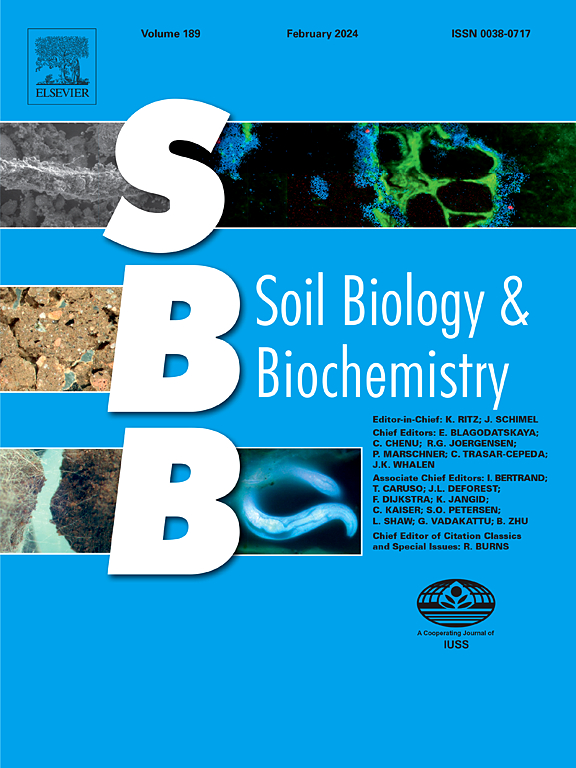Interpreting differences in microbial carbon and nitrogen use efficiencies estimated by isotope methods and the ecoenzyme stoichiometry model
IF 10.3
1区 农林科学
Q1 SOIL SCIENCE
引用次数: 0
Abstract
Isotope methods and ecoenzyme stoichiometry are the most commonly used approaches to estimate carbon and nitrogen use efficiencies (CUE and NUE) of microbial communities. Isotope methods estimate metabolic efficiencies by tracking the allocation of substrate between catabolic and anabolic fates, whereas ecoenzyme stoichiometry estimates resource use efficiencies based on balancing substrate availability with microbial element requirements. These differences affect interpretation, which has often been overlooked, leading to misconceptions and erroneous conclusions. In this paper, we clarify key differences in frameworks for interpreting results from the two methods with respect to potential driving factors. Differences in element use efficiencies determined by isotope methods primarily reflect changes in substrate biochemical transformations within microbial communities, whereas ecoenzyme stoichiometry mirrors shifts in the match between substrate stoichiometry and microbial community element requirements. Specifically clarifying these differences provides a better understanding and complementary interpretation of microbial CUE and NUE.
利用同位素方法和生物酶化学计量模型解释微生物碳氮利用效率的差异
同位素方法和生物酶化学计量学是估算微生物群落碳氮利用效率(CUE和NUE)最常用的方法。同位素方法通过跟踪底物在分解代谢和合成代谢命运之间的分配来估计代谢效率,而生物酶化学计量学根据平衡底物有效性和微生物元素需求来估计资源利用效率。这些差异影响解释,这往往被忽视,导致误解和错误的结论。在本文中,我们澄清了两种方法在潜在驱动因素方面解释结果框架的关键差异。同位素方法确定的元素利用效率差异主要反映了微生物群落内底物生化转化的变化,而生物酶化学计量反映了底物化学计量与微生物群落元素需求之间匹配的变化。明确这些差异可以更好地理解和补充解释微生物CUE和NUE。
本文章由计算机程序翻译,如有差异,请以英文原文为准。
求助全文
约1分钟内获得全文
求助全文
来源期刊

Soil Biology & Biochemistry
农林科学-土壤科学
CiteScore
16.90
自引率
9.30%
发文量
312
审稿时长
49 days
期刊介绍:
Soil Biology & Biochemistry publishes original research articles of international significance focusing on biological processes in soil and their applications to soil and environmental quality. Major topics include the ecology and biochemical processes of soil organisms, their effects on the environment, and interactions with plants. The journal also welcomes state-of-the-art reviews and discussions on contemporary research in soil biology and biochemistry.
 求助内容:
求助内容: 应助结果提醒方式:
应助结果提醒方式:


